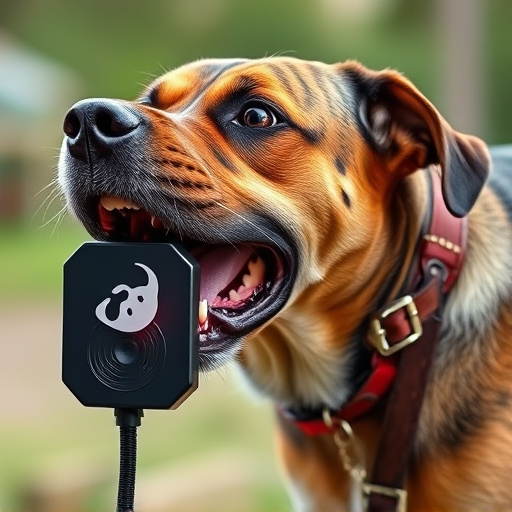When choosing an electronic dog deterrent, prioritize Safe Power Levels for your pet's welfare. Customizable settings allow you to tailor signal intensity based on your dog's sensitivity and environment, ensuring effective training without discomfort or injury. Start by understanding your pet's behavior and adjust device settings accordingly, using safe power levels specific to dog deterrents. Regularly monitor and combine the device with positive reinforcement training for a humane learning experience.
Introducing our comprehensive guide on revolutionizing pet training with electronic deterrents—a safe, effective approach to modifying behavior. In this article, we explore a key feature often overlooked: Safe Power Levels in dog deterrents, ensuring minimal discomfort for your furry friend. We’ll delve into how customizable settings transform the deterrent experience, catering to individual pets’ needs. Additionally, discover practical tips for successful implementation, ensuring positive results without compromising your pet’s well-being.
- Understanding Safe Power Levels: A Key Feature in Dog Deterrents
- How Settings Personalize the Deterrent Experience for Your Pet
- Best Practices and Tips for Implementing Electronic Pet Deterrents Effectively
Understanding Safe Power Levels: A Key Feature in Dog Deterrents
When considering electronic pet deterrents, understanding safe power levels is a crucial feature to ensure the well-being of your furry friend. These devices emit harmless but effective signals to discourage unwanted behavior like barking or roaming. However, not all dog deterrents are created equal; some may operate at potentially harmful power levels that could cause discomfort or even injury to pets.
Choosing a device with adjustable and safe power settings allows you to customize the intensity of the signal according to your dog’s sensitivity and the situation. This flexibility is particularly important as different dogs have varying tolerances, and certain environments may require lower settings for more delicate areas like eyes or sensitive skin. By opting for a dog deterrent with precise control over safe power levels, pet owners can effectively train their dogs without risking any adverse effects.
How Settings Personalize the Deterrent Experience for Your Pet
Electronic pet deterrents, designed to gently correct unwanted behaviors, offer a range of settings that allow for personalized and safe power levels. This customization is key in ensuring the comfort and safety of your pet, as it enables you to tailor the device’s response according to their unique sensitivity and behavior patterns. For instance, lower power levels can be used for smaller dogs or pets new to the deterrent, while higher levels are suitable for larger breeds or those with more persistent issues.
These settings provide a flexible and effective solution, allowing you to create a safe and positive training environment. By adjusting the power output, you can avoid any potential harm or discomfort while still encouraging desired behaviors. This personalization is especially beneficial for dog owners looking for a humane and controlled approach to behavior modification, ensuring both their pet’s well-being and successful training outcomes.
Best Practices and Tips for Implementing Electronic Pet Deterrents Effectively
Implementing an electronic pet deterrent requires a thoughtful, nuanced approach for optimal effectiveness and safety. Start by assessing your pet’s behavior patterns and triggers to tailor the device’s settings accordingly. Utilize safe power levels specific to dog deterrents; excessive voltage can cause discomfort or even harm, undermining the device’s intended purpose of training positive behavior. Regularly monitor and adjust settings as your pet adapts, ensuring a consistent yet humane learning experience.
Consider environmental factors too – placement of the deterrent is key. Position it in areas where unwanted behaviors occur most frequently, but ensure it doesn’t create an unsafe or stressful environment. Combine the device with positive reinforcement training for best results; reward desired behavior while the deterrent is active to reinforce learning. Keep communication open between you and your pet, allowing them to associate the safe power levels with positive outcomes rather than punishment.
When choosing an electronic pet deterrent, understanding safe power levels is crucial for a humane and effective training tool. The right settings allow you to personalize the experience, ensuring it’s tailored to your dog’s unique behavior and needs. By following best practices and implementing these tips, you can effectively use an electronic dog deterrent while maintaining a positive training environment. Remember, a well-trained dog is a happy dog, and with the right approach, you can achieve both without causing discomfort or stress.
